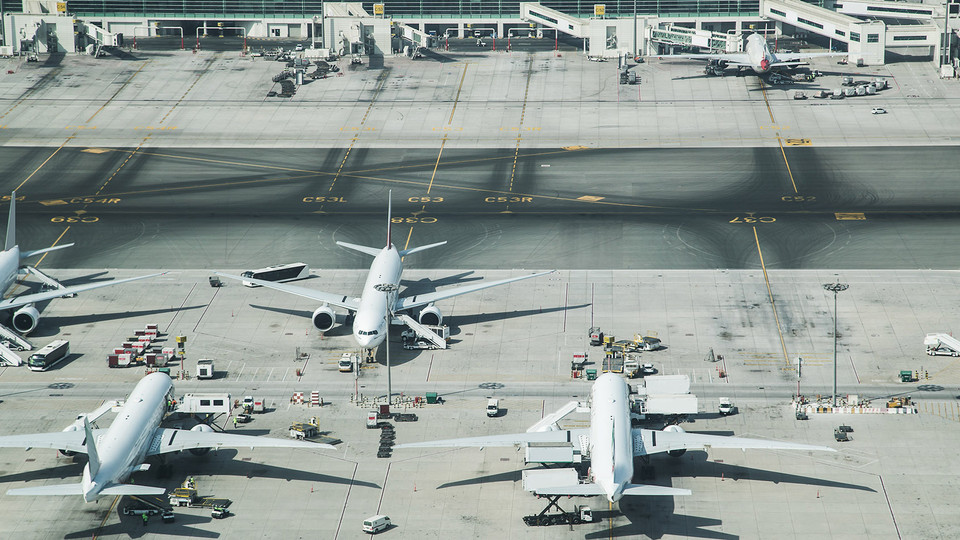Jan 30, 2020 Jan Uphues
ShareAlmost two years ago, I experienced advanced Airport Management as a passenger without noticing. I took a flight from Dusseldorf to Dubai International Airport. I was in the minority among all incoming travelers, as in Dubai four out of five take a connecting flight from there. This makes Dubai one of the largest airport hubs worldwide, certainly the biggest in Middle East, being among the top 5 of the world’s busiest airports by passenger numbers and still growing quickly. It was surprising for me to learn: airport hubs, which are part of the hub-and-spoke system, are most popular and busy than ever, despite the rise of the budget airlines with their point-to-point distribution system. They must cope with this growth, which means constant enhancement, improvement, and enlargement. In Dubai, they pulled it off that morning again: it all went smooth and efficient despite the gigantic dimensions. Everyone was unmistakably guided into the direction he or she was required. Another gangway, staircase, giant hall some random cathedral would have comfortably fit into, another subway and one more corridor – and finally, we found ourselves at the designated baggage carousel. In a nutshell: the best airport management is the one you don’t even notice.
Airport Management: Complex processes to conduct
Why am I telling you this when nothing special happened? Well, this was just the hook. Behind this achievement, there are thousands of processes, planning, staff and equipment that makes it all happen. The demand for all of this is constantly increasing. Thousands of us depart and arrive on time. Everyone, or almost everyone reaches their connecting flights, even though the sheer number of processes running in parallel is immeasurable in terms of complexity and susceptibility to failure. Of course, this applies not only to Dubai International Airport, but to every major hub, like Frankfurt Airport, Seattle-Tacoma Airport or Beijing Capital International Airport. But what are the major obstacles or conflict goals for both planners and passengers? What are the trends to tackle these challenges?
One big challenge are certainly the long distances that mostly everyone has experienced when departing from a large hub: You arrive by car and must travel from your parking lot to the check in counter which is easily one or two miles. Then pass the security, proceed to the gate, you know it by heart. We often experience this journey as time consuming and stressful, being pressed for time to reach our flight or connecting flight.
Efficient Passenger Transportation System
A clever way to guide the masses is therefore required from the airport management. To avoid forcing people to stay within the terminals for too long, an efficient passenger transportation system has to be established. The planning for this begins long before the entrance doors: governments have to consider whether their road and public transportation networks can cater to the growing number of passengers coming in and out of their airports. How do you manage to shorten the walking distances in order to not annoy passengers? How do you use the terminal resources like gates, escalators, belt conveyors, sky trains and stairs in a most efficient and sustainable way? On top of that, how can passengers be guided along many shopping, catering and grocery opportunities to generate additional revenues for the airport? Their travelling experience must be kept as stress-free and entertaining as possible. Passengers who are happy have some free time are more likely to go shopping. To enhance their experience and provide them with a smooth connection or check-out process, airports and technology companies around the world need to integrate new technologies, and that’s what they do – Airport Management at its best. Edinburgh Airport, for instance, has released an app, which allows passengers to personalize the assistance they require by setting up a profile and requesting assistance in advance of their travel. Many airports are also increasingly investing in strategic partnerships in retail and customer service. Dubai International Airport became the first airport to partner with Deliveroo, one of the global leaders in food delivery. The concept named DeliverooDXB – which was trialed at the airport, enabled passengers to get freshly-prepared food delivered straight to their boarding gates within minutes of ordering.
Finally, automation of services will facilitate a smoother flow of passengers and a more personalized service in, through and around the airport. “For example, automatic bag drops allow passengers to retrieve their booking biometrically instead of using a boarding pass, saving valuable seconds that would otherwise compound as hundreds of passengers check their bags onto flights,” said Dr Thomas Landgrebe from ICM Airport Technics.
Ideal Airport Size?
Still, there are challenges to be tackled, the continuous growth of airports might lead to problems in the future. There is no valid agreement or definition about the ideal size for an airport. It probably depends on the ingredients of the particular airport but there is no template for determining how big an airport can get before its operations become impractical. Atlanta’s more than 100 million passengers per year travel mainly on Delta, concentrating the control more narrowly. An airport handling 125 or 200 million passengers per year on a range of airlines, many of them international is a different proposition; and operating more than six runways can pose organizational problems of its own. The airports also face the “green challenge”, as to be seen in one of our previous blogs: as aircraft are already becoming greener, they need to keep up in reducing their emissions and save up resources. Boston Logan International Airport, Denver International Airport, East Midlands Airport, England, San Francisco International Airport, Seattle-Tacoma Airport and Zurich Airport, Switzerland have all been given credit for their earth-friendly business practices. This includes solar panels, wind turbines and aircraft plug-in power options.
Massive changes in Airport Management
This latter aspect is one of the strongest drivers for an even stronger change of airports hubs in the next few years. It is no longer enough to just become more efficient and offer passengers a better travel experience. Airport Management will also increasingly have to consider environmental aspects in the future in order to operate and as resource-saving as possible. This is not only an increasingly common requirement from the passengers and ground handlers, but also an ecological need. This, in turn, requires a joint effort of airlines, airports, and ground handlers.
Leave your comments on your experiences with huge crowded airports and what has changed in the last few years! Is it a matter of airport management or the passengers?
About our Expert

Jan Uphues
Marketing Manager
From the exhilarating rush of his very first flight, Jan Uphues was captivated by the world of aviation. Though that maiden voyage had its jittery moments, it set the course for a lifelong passion. Starting at INFORM in 2018, he combined it with his second love: crafting compelling content.


